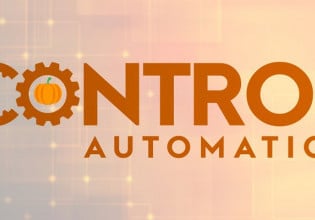ISO 9001 Certification and Calibration Explained
Learn about the importance of the ISO 9001 standard and some essential procedures and considerations to make when using the standard.
All ISO 9001 accredited organizations require them to develop a calibration system that conforms to the requirements of ISO 9001. The versatility of the ISO standard can cover many processes, and calibration is one of them.

Figure 1. A calibration technique in the process. Image courtesy of Testo.
Calibration Procedure Using ISO 9001
Clause 7.1.5 of ISO 9001:2015 defines the requirements for calibration in ISO 9001 and is called Monitoring and Measuring Resources for ISO 9001. This standard does not provide the actual procedure for calibration but outlines the requirements an organization must follow. Every organization can choose its way of fulfilling these requirements.
The requirements can be summarized as:
- ISO Certified Laboratory - ISO 17025
- Calibration before use
- Frequency
- Calibration records
- ISO Certified Laboratory - ISO 17025
The mandatory requirements for the ISO 9001 certified companies to calibrate their instruments from the laboratories that are accredited to ISO standard 17025. The ISO 17025 provides the guideline for a calibration laboratory to follow.
The focus is on personnel expertise, equipment selection, validity, documented procedures, and measured tolerance levels. When selecting an ISO 17025 accredited laboratory, it helps to ask them for the ISO certificate indicating the accreditation level and time period for a valid certificate.
Calibration Before Use
Calibration is necessary before you can use a new instrument. It is not professional to start using instruments before calibration. It sometimes happens when there is urgency in a process, and since calibration activity takes time, the concerned people start using it without calibration.
Calibration Frequency and Methods
Proper calibration frequency activity is essential, as it directs the device’s performance. If the frequency is prolonged, then the device’s performance and results are not up to the mark. If the frequency is short, then it results in unnecessary calibration activity, wasting time and resources.
The ISO Standard does not provide any calibration’s frequency for any device. Instead, it relies on the organization’s methodology for the frequency. Generally, there are two methods to define a frequency.
One method is to set the frequency according to the consultation of the manufacturer’s guidelines. Another method depends upon the device usage. If the device is frequently used, then the frequency is more often, and if the device is not frequently used, it can be calibrated less often.
Calibration Records
It is crucial to maintain records of when the device is calibrated. This record is in the form of Calibration Certificates, which indicates the following information:
- Device name
- Device ID/department
- Parameter calibrated
- Acceptance range/tolerance levels
- Calibration date/frequency/next calibration due
Additionally, you can find the calibration status on the device by looking for the calibration tag. The tag indicates device ID, calibration date, and next calibration due date.

Figure 2. An example of a calibration sticker. Image courtesy of J. A. King.
How do you know if your company complies with this standard? The most accepted method to determine if your company complies with the ISO Standard is by looking for the certificate. The organization issues a certificate that helps ISO in the certification process. The ISO is not involved in the certification process. It only develops standards.

Figure 3. A certificate describing the accreditation level of a laboratory. Image courtesy of Testo.
International Accreditation Forum (IAF) and International Laboratory Accreditation Cooperation (ILAC) are the two organizations responsible for the accreditation of bodies that provide certification on behalf of ISO. The organization that provides certification should follow the guidelines set by ISO in ISO’s Committee on Conformity Assessment (CASCO).
The following are some common points to consider for the certificate:
- The standard of certification like ISO 9001:2015 or ISO 9001:2008 rather than general wordings like ISO certified.
- The certificate is not expired
- The certification body’s status is verified online through the corresponding accreditation body
Importance of ISO 9001
The ISO is the body that develops standards for all components of an organization. The ISO has maintained credibility in almost all the world’s regions. Although its certification is not necessary to operate in every area of the world, its certification helps developing its credibility in the following ways.
Customer Satisfaction
By following the guidance of a body having an international footprint and having an authentic reputation, we can make ourselves competitive with other players in the field. This results in increased user satisfaction and increased revenue.
Continuous Improvement
The adoption of ISO 9001 allows identifying any weaknesses in the system that are unable to be identified. Not only does it identify weakness, but standards like ISO explains how to solve these weaknesses. This initiates a system of root cause analysis, followed by corrective actions.
Self-Improvement
The standardization activity encourages self-improvement at all levels resulting in improved employee engagement.
It ensures that people at all levels are aware of the company’s policy and commitment to Quality. This involvement promotes a culture of trust, motivation, collaboration, and development throughout the organization.
Data Availability
The ISO standard makes critical data available. It makes monitoring possible when required, such as root cause analysis activity—efforts to protect data from any loss, enabling a secure environment for critical data.







Thank you for sharing this article. In ISO 9001:2015, the requirement is called “Measurement Traceability” and calibration is a component of this requirement.